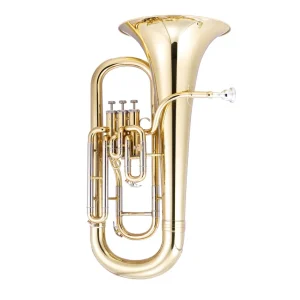In the musical world, brass wind instruments hold a unique place with their powerful projection, bright tone, and wide expressive range. From the sharp brilliance of the trumpet to the deep resonance of the tuba, these instruments are vital in orchestras, jazz ensembles, marching bands, and solo performances. This guide explores the types of brass wind instruments, their features, and BeatBulk’s professional supply advantages for music schools, distributors, and brands.

What Are Brass Wind Instruments?
Brass instruments produce sound through lip vibration against a mouthpiece, with metal tubing and a flared bell amplifying the tone. Their range spans from high-pitched lead voices to the bass foundation in large ensembles.
Two main categories exist:
- Valve Brass Instruments – Pitch is altered using valves, as in instrument trumpets, French horns, and euphoniums.
- Slide Brass Instruments – Pitch is changed by moving a slide, as in trombones.
Main Types of Brass Wind Instruments
Trumpet
The instrument trumpets are bright and agile, ideal for solos and ensemble work. Popular models include B♭ and C trumpets, as well as cornets.
Trombone
The trombones use a slide to adjust pitch. They have a full, rich tone and are common in orchestras, jazz bands, and pop arrangements. Variants include alto and bass trombones.
French Horn
The French horn delivers a warm, mellow timbre. It often plays in symphonic, chamber, and film music. Modern double horns offer a wide range and flexible tuning.
Baritone Horn & Euphonium
These mid-to-low brass instruments fill the gap between trombones and tubas. They often play supporting bass lines in wind and military bands.
Tuba
The tuba anchors the brass section with a deep, resonant sound. It is essential in orchestral and large ensemble bass parts.
Sousaphone
A marching-friendly adaptation of the tuba, the sousaphone wraps around the player’s body for easier mobility during outdoor performances.
BeatBulk’s Brass Instrument Supply Advantages
As one of the trusted music instrument wholesale distributors, BeatBulk offers a full range of brass wind instruments for all skill levels and performance needs.
Our popular models include:
- B♭ Professional Trumpet – Accurate pitch and vibrant tone for advanced players.
- Entry-Level Trumpet & Alto Trumpet – Affordable, stable, and beginner-friendly.
- Professional & Student Trombones – Precision design for easy tuning and versatile play.
- 3-Key & Double French Horns – Suitable for both practice and concert use.
- Euphonium, Baritone, and Tuba – Warm, rich tone for orchestral and band settings.
We also provide customization services, adjusting plating, size, tuning, and packaging to meet client requirements. Our wholesale model supports schools, retailers, and international distributors with competitive pricing and reliable logistics.
Brass vs. Woodwind Instruments
While both belong to the wind family, brass and woodwind instruments differ in sound production. Brass instruments rely on lip vibration and air column resonance, while woodwinds use reeds or directed airflow across a tone hole. Both are essential in orchestras, often blending to create a balanced soundscape.
How to Choose the Right Brass Instrument
- Match to Purpose – Beginners may start with a trumpet or trombone; orchestral players might need a French horn or tuba.
- Check Materials & Craftsmanship – Quality brass and fine welding improve tone and durability.
- Select a Trusted Brand – Choosing BeatBulk ensures quality control, customization, and dependable after-sales support.
Conclusion
From the clear brilliance of the trumpet to the deep foundation of the tuba, the types of brass wind instruments bring depth and character to any ensemble. For schools, music stores, or wholesale buyers, working with an experienced manufacturer like BeatBulk ensures access to quality products, customization, and global delivery.
☞ Contact us today to explore our catalog, request samples, or get a tailored wholesale quote.







